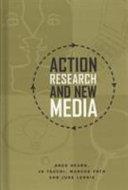
Action Research and New Media
Concepts, Methods, and Cases
Action research is now a well-documented and well-accepted research methodology. Moreover, it is especially appropriate in new media research, where innovation and change are continual, and where processes and outcomes are usually not predictable and often involve fuzzy and subjective human elements. This book offers a systematic, in-depth academic overview of the application of action research methods to the field of new media. In this space, it is the first publication of its kind in what is a new but rapidly growing field. The book is divided into two sections. Introducing the two key concepts, namely, new media and action research, the first section describes the underlying principles, processes, questions, methods and tools that are relevant to an action research approach to new media inquiry. This is followed by a deeper exploration of three advanced, innovative approaches to action research and new media: ethnographic, network, and anticipatory action research. The third and final section presents four case studies and their individual applications of action research in different new media contexts
- ISBN 13 : 9781572738676
- ISBN 10 : 1572738677
- Judul : Action Research and New Media
- Sub Judul : Concepts, Methods, and Cases
- Pengarang : ,
- Kategori : Social Science
- Penerbit : Hampton Press (NJ)
- Bahasa : en
- Tahun : 2009
- Halaman : 273
- Halaman : 273
- Google Book : http://books.google.co.id/books?id=esnrAAAAMAAJ&dq=intitle:action+research&hl=&source=gbs_api
-
Ketersediaan :
As Brydon-Miller, Greenwood, and Maguire (2003) pointed out: 'action research
is a work in progress' (p. 11). Stringer (1999) commented that quite 'disparate'
histories of action research have been written by authors such as Kemmis and ...


